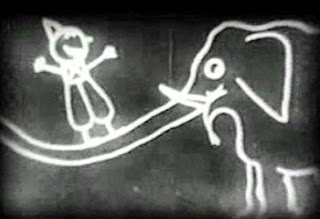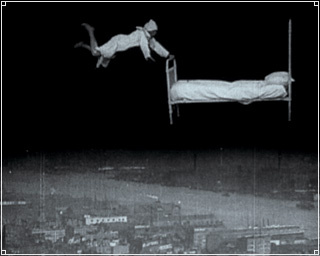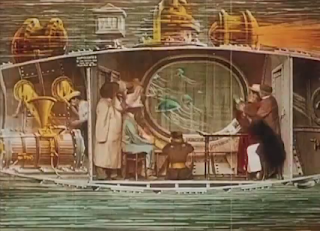 |
| Director: J. Searle Dawley Starring: Augustus Phillips Length: 12:40 minutes |
This is J. Searle Dawley’s “Frankenstein”, the first film
adaptation of the Shelley novel ever made.
For some reason, it seems commonplace to refer to this movie as Thomas
Edison’s version of Frankenstein, since it was his company Edison Studios that
financed it... but Edison Studios also financed “The Great Train Robbery” and “Dream
of a Rarebit Fiend”—how come nobody ever talks about “Edison’s Great
Train Robbery”? ‘Tis a mystery!
The film was considered lost until a copy was found in the
70’s, and that copy must have been quite badly damaged because this is the most
deteriorated movie I’ve watched since “Fred Ott’s Sneeze”. Half of the scenes have that sickening piss
color that only old worn-out silent films can be, and one sequence is
blue. I have no idea what kind of damage
has to be done to a film reel to turn it blue—what did they dump it in drain
cleaner or something? Better to have the movie beaten and blue, than to not have it at all, though. Now they just need to find a copy the lost 1913 film "The Werewolf".
“Frankenstein” is, as its opening title card says, a “liberal
adaptation from Mrs. Shelley’s famous story”.
I wouldn’t know the difference, since I’ve never read the novel, and no two film
versions of Frankenstein are ever all
that similar to each other... (my favorite is the Hallmark one made in 2004). Frankenstein goes to
college, does his famous experiment where he creates a monster, and afterward
tries to court and marry his sweetheart while the creature endlessly pursues
him. The monster also pines after
Frankenstein’s darling, and when he first sees in a mirror how hideous he is,
he despairs, and then uhh... disappears. He simply vanishes into a mirror, "overcome by love". Is that part from the book?
This version of "Frankenstein" does away with the whole element of exhuming
corpses to harvest their organs—doubtful that that would've gotten past the censors. Here,
Frankenstein creates the monster by putting the secret ingredients into a
cauldron and then cooking them in an oven.
There’s an interesting special effect, of the monster slowly taking
shape inside the oven, that was made by filming a dummy being burnt down
and then playing it in reverse.
Honestly, the imagery looks pretty gruesome for 1910; it reminds me of the famous face-melting scene from "Raiders of the Lost Ark".
In the early scenes, after the monster is first made, there
are some shots that I could easily see scaring an audience back in the day: when the monster is first revealed, all we
see is his creeping hand reaching out from inside the oven, grasping towards
Dr. Frankenstein—well, the title cards say he creates the monster after two years
of college, so I don’t suppose he’s a doctor yet in this version. When the full monster is first seen, he
appears suddenly behind Victor Frankenstein, in all that funky monster makeup. Later, however, the movie enters into
comedy... a decision I don’t get at all.
Maybe they didn’t want to scare the primitive moviegoers too much.






